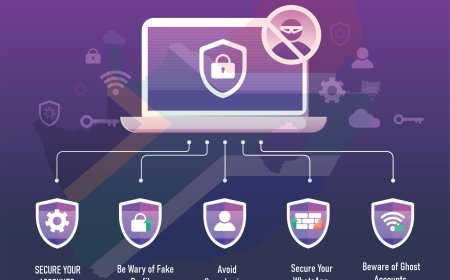South Africa's Top 10 Cyber Security Hit List: A Nation Under Digital Siege
Discover South Africa's top 10 cybersecurity threats, from the ransomware siege on critical infrastructure to massive-scale data breaches. Learn how Africa's most advanced digital economy is battling a sophisticated wave of cybercrime costing the nation billions.

As the African continent's most digitally integrated and advanced economy, South Africa represents a prime target for a wide spectrum of global cyber adversaries, from highly organized criminal syndicates to nation-state actors.
10. Exploitation of Unpatched Systems
One of the most significant yet basic vulnerabilities plaguing South African organizations is the failure to manage and patch known security flaws. The country is burdened with hundreds of known exploited vulnerabilities (KEVs), including long-standing flaws like CVE-2017-18368 and weaknesses in widely used platforms such as WordPress and Apache.
9. High-Volume Malware Attacks
South Africa is under a constant and relentless barrage of malware attacks. The nation is estimated to suffer approximately 577 malware attacks per hour.
8. Digital Extortion
A particularly insidious threat on the rise is digital extortion. In these schemes, victims are tricked into sharing sexually compromising images or other sensitive information, which is then used for blackmail.
7. Pervasive Phishing Campaigns
Phishing remains a highly effective and widespread threat. These attacks use fake emails, text messages, or websites claiming to be from a legitimate source to trick individuals into revealing personal or financial information.
6. Business Email Compromise (BEC)
A more targeted and financially damaging form of social engineering is Business Email Compromise (BEC). In these attacks, criminals hack into corporate email systems to deceive employees into transferring company funds into fraudulent bank accounts.
5. A Thriving Dark Web Economy & Initial Access Brokers
South Africa's data breach crisis feeds a bustling underground economy on the dark web.
initial access brokers (IABs), who specialize in breaching corporate networks and selling that access to other malicious actors, particularly ransomware groups.
4. Massive-Scale Data Breaches
The country is contending with an alarming and continuous stream of large-scale data breaches. A single breach at a South African credit agency compromised the personal and financial information of 24 million people, highlighting the systemic risk posed by the compromise of one data-rich entity.
2024 general elections, allegedly including the personal details of candidates and ministry officials.
3. The Rise of Ransomware-as-a-Service (RaaS)
The ransomware threat is amplified by the proliferation of Ransomware-as-a-Service (RaaS) groups. Highly aggressive and professional syndicates such as Devman, Warlock, Incransom, and Arkana dominate the landscape.
2. Advanced Ransomware Tactics (Double Extortion)
Modern ransomware attacks in South Africa go far beyond simply encrypting data. Threat actors are increasingly employing "double-extortion" tactics. First, they quietly exfiltrate large volumes of sensitive corporate or personal data. Only then do they encrypt the victim's systems and demand a ransom, adding a second threat: if the ransom is not paid, the stolen data will be publicly released.
1. Ransomware Siege on Critical Infrastructure
Ransomware has unequivocally emerged as the single most disruptive and financially damaging cyber threat to South Africa, with a reported 22% year-on-year increase in incidents.
-
City Power (2019): A ransomware attack on Johannesburg's electricity utility disrupted the distribution of pre-paid electricity, leaving customers without power.
8 -
Life Health Care Group (2020): An attack on one of the country's largest private hospital groups severely disrupted admissions and processing systems, directly impacting patient care.
3 -
Transnet (2021): A debilitating attack on the state-owned port and rail operator crippled its IT systems, severely impacting national and international supply chains.
3 -
Department of Justice and Constitutional Development (2021): This attack compromised over 1,200 confidential files, undermining the integrity of the justice system.
3
These attacks prove that ransomware is not just a corporate issue but a direct threat to national security, economic stability, and the daily lives of citizens.
Conclusion: Bridging the Policy-Practice Gap
The success of these top 10 threats is enabled by deep-seated, foundational vulnerabilities. The most critical of these is a significant cybersecurity skills gap, where the demand for qualified professionals far outstrips the available supply.
fragmented enforcement of regulatory frameworks and the persistent problem of outdated technological infrastructure.
While South Africa has a robust National Cybersecurity Policy Framework (NCPF) on paper, a significant gap exists between this stated policy and the reality of the country's defensive capabilities.
What's Your Reaction?
 Like
0
Like
0
 Dislike
0
Dislike
0
 Love
0
Love
0
 Funny
0
Funny
0
 Angry
0
Angry
0
 Sad
0
Sad
0
 Wow
0
Wow
0





































